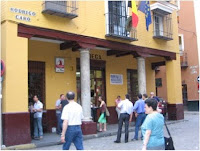
Confessions of a Retired Pet Sitter I don’t think I’ve mentioned any of this yet but until last year, I had basically 2.5 paid jobs. One, the main one, is at National Geographic. The second one at which I thanklessly toiled (a little dramatic? perhaps) for three years, was pet sitting. I worked for an agency that takes care of animals (mostly cats but also dogs, fish, exotic birds, your random, demanding hermit crab, etc.) in people’s homes while they’re out of town. I started working for the agency that shall remain nameless due to legal concerns (the privacy of our clients but of course) while in graduate school. I had initially hired the agency to take care of my own two cats, Begbie and Andy. I had found out about the agency just by looking for such a service online; through the Washington City Paper ’s classifieds. I was impressed when one of the pet sitters, a woman I will mysteriously call “Sally,” came by our apartment one evening to get...










